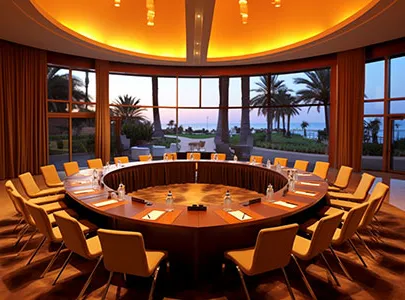Introduction
The “patient experience” has become a primary and leading excellence benchmark for the performance a best-in-class healthcare organization delivers on quality, safety and service. The patient experience is a journey that can take a healthcare organization to the top of the patient care league. However, If not efficient, it can also have an adverse impact on an organization’s reputation and sustainability.
This course provides participants with the knowledge and skills to design and implement a patient experience-based framework to improve the overall performance of their organization. Participants will learn how to build high performing and engaged healthcare teams, establish and sustain effective clinical relationships, as well as implement strategies and tools to support patient-centered care.
Course Objectives of Excellence in Patient Experience and involvement
- Attract and engage customer-focused employees who are passionate about providing the best and most compassionate, yet efficient, care to the patient
- Establish and sustain effective clinical relationships by leveraging key internal and external communication strategies
- Build a coaching culture that supports consistent exceptional care and service
- Identify and address the differences in patients’ values, preferences and expressed needs
- Design a patient experience framework that better meets and exceeds the patient’s needs
Course Outline - Excellence in Patient Experience and involvement
Day 1
Building effective clinical relationships
- The clinical value system
- The impact of organizational culture on working relationships
- The impact of clinical relationships on the patient experience
- Clinical relationships assessment
- Roadblocks in clinical relationships
- Opportunities in clinical relationships
Day 2
The key role of communication
- Key aspects of interpersonal communication skills
- Communication and interpersonal relationship styles:
- Choice of words
- Tone of voice
- Eye contact
- Body language and gestures
- Proper titles
- Techniques to communicate empathy and compassion
- Communication methods to enhance patient experience
Day 3
Cultural diversity in patient-centered care
- Basic concepts of cultural competence
- Knowing your patients’ demographics
- Practitioners and patients’ approach to
- Health
- Illness
- Healthcare
- Differences in patients’ values, preferences and expressed needs
- Medical decision-making and its impact on the patient/family/community
Day 4
Attracting and engaging customer-focused employees
- Attributes and benefits of an engaged workforce
- Innovative techniques to hire a patient-centered workforce
- Strategies for recognizing employee commitment to patient experience
- Fostering employee engagement
- Creating a coaching culture
- Core coaching concepts in healthcare
- The coaching process
- Adopting a coaching culture through leaders and influencers
- The impact of coaching on the quality of care and services
- Other leadership techniques
Day 5
Designing the patient experience & Planetree
- Bringing planetree to a community hospital
- Concepts of experience-based design
- Gathering experiences from patients, families and staff
- Observations
- Interviews
- Identifying strengths and gaps
- The experience-based design framework
- Managing and delivering an improved patient experience
Day 6
Verbal Communication Skills with the Clients
- Kinds of verbal communication
- How to prepare for a presentation or a speech
- Rehearsing your presentation or speech
- Verbal and non-verbal skills while presenting
Day 7
Written Communication Skills with Local Communities and Press
- Writing for the eye and ear
- Fundamentals of writing
- Written communication media for communities
- Preparing a press release
- Writing and producing newsletters
- Designing and producing brochures
- Preparing articles for magazines
Day 8
Marketing communication and campaigns for Clients & Communities
- Steps in creating a promotional campaign
- The goals and tasks of promotion
- The 'AIDA' concept
- Setting the advertising budget
- The various media types
- Media scheduling
- Evaluating promotional campaigns
Day 9 - 10
PR and Communication with Individuals & Groups in Hospitals
- Communicating with the internal and external public
- Key components in communication
- Diffusion and effects of communication
- What makes effective communicators in PR
- Communication functions
- Overcoming barriers in communication
- Non-verbal communication
- The communication abilities for PR professionals
Conducting Patient Satisfaction Surveys
Field visit to a Public Hospital
- Observing day-to-day responsibilities such as managing coordinating with doctors, physicians, nurses, surgeons, health information technicians, pharmacists, and other professionals to ensure patient quality care, treatment, and rehabilitation.
- Understanding the roles with regard to making a policy decision, overseeing patient care, budgeting and accounting, marketing, and driving policy impacting and technology innovations in the hospital.
- Observe communication levels with the patients and their involvement
- Being familiar with the role serving communities and local groups for better social responsibilty, communication and media
Credits: 5 credit per day
Course Mode: full-time
Provider: Blackbird Training Centre
